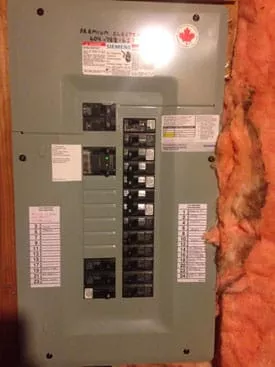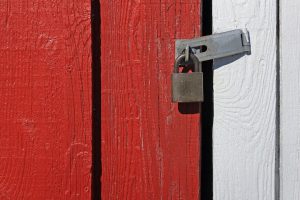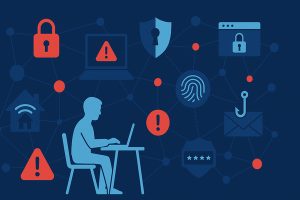You’re relaxing at home, perhaps binge-watching your favorite series or cooking dinner, when suddenly, everything goes dark. Your heart skips a beat.
Why did the power cut out? Chances are, your circuit breaker tripped. It’s a common household hiccup, yet it can feel like a mystery every time it happens. But don’t worry—understanding why your circuit breaker trips can save you from future disruptions and keep your home safe.
We’ll unravel the reasons behind this electrical enigma and equip you with simple, actionable steps to tackle it head-on. Ready to take control and prevent future power interruptions? Let’s dive in.

Credit: www.premium-electric.ca
Common Causes Of Tripped Circuit Breakers
Understanding why your circuit breaker tripped is the first step to fixing the problem and preventing future issues. Circuit breakers are designed to protect your home’s electrical system, but they can trip for several common reasons. Identifying these causes can save you time, money, and the hassle of frequent resets.
Overloaded Circuits
Overloaded circuits happen when too many devices draw power from the same circuit at once. This often occurs in rooms with multiple appliances running simultaneously, such as a kitchen with a toaster, microwave, and coffee maker all plugged in. Have you ever noticed your breaker trip when using several gadgets? That’s your circuit telling you it’s handling more than it can safely support.
Short Circuits
A short circuit happens when a hot wire touches another wire or a metal part, causing an immediate surge of electricity. This sudden spike forces the breaker to trip to avoid damage or fire. Short circuits often happen due to faulty wiring or damaged insulation. If you’ve experienced flickering lights or sparks before the breaker trips, it could be a sign of a short circuit in your system.
Ground Faults
Ground faults occur when electricity escapes the intended path and flows into the ground wire or a grounded portion of the system. This is dangerous because it can cause shocks or fires. Ground-fault circuit interrupters (GFCIs) are designed to detect this and trip quickly. Have you noticed your bathroom or outdoor outlets tripping more often? These areas are prone to moisture, increasing the risk of ground faults.
Faulty Appliances
Sometimes the problem isn’t the wiring but the appliance itself. Faulty appliances can draw excessive current or cause short circuits, leading to breaker trips. If your breaker trips every time you turn on a particular device, that appliance might need repair or replacement. Have you ever had a single appliance repeatedly cause issues? That’s a clear sign to check its electrical health.
How To Safely Reset A Circuit Breaker
Resetting a circuit breaker might seem intimidating if you’ve never done it before. But it’s a straightforward process that can restore power quickly and safely. Knowing exactly what to do helps you avoid risks and get your home or workspace back up and running without waiting for an electrician.
Locate The Breaker Panel
Your circuit breaker panel is usually found in utility areas like a basement, garage, or closet. Look for a metal box mounted on the wall with a door that swings open. It’s often labeled as an electrical panel or breaker box.
Can you remember the last time you actually checked where yours is? Keeping it accessible is important for emergencies.
Identify The Tripped Breaker
Inside the panel, breakers are lined up in rows with small switches. The tripped breaker usually sits between the ON and OFF positions or shows a red or orange indicator. It might feel loose or slightly out of place compared to the others.
If you’re unsure which breaker tripped, try turning off devices on each circuit and look for the switch that won’t stay in the ON position. This small detective work saves time and prevents unnecessary resets.
Steps To Reset The Breaker
- First, turn the breaker fully to the OFF position to clear it.
- Wait for a few seconds to ensure the breaker resets internally.
- Then, flip the breaker back to the ON position firmly until it clicks.
- Check if power has been restored to the affected area.
If the breaker trips again immediately, it might signal a bigger electrical issue. Don’t keep resetting it without checking the cause.
Safety Precautions
- Always stand on a dry surface when working near the breaker panel.
- Avoid touching other breakers or wiring inside the panel.
- Use one hand if you need to open the panel to reduce the risk of electric shock.
- Wear rubber-soled shoes for extra insulation.
- If you smell burning or see sparks, do not attempt to reset the breaker—call a professional immediately.
Have you ever felt unsure about handling electrical components? It’s smart to know your limits and call an expert when needed. Your safety is more important than saving a few minutes.
Quick Checks Before Resetting
Before resetting a tripped circuit breaker, perform quick checks to avoid further problems. These checks help find the cause and keep your home safe.
Taking a moment for these steps can prevent repeated trips or electrical hazards. Safety starts with simple inspections.
Unplug Devices
Remove all devices and appliances connected to the circuit. This prevents extra load during reset. Sometimes, a faulty device causes the breaker to trip.
Unplugging also protects your devices from damage when power returns.
Inspect For Visible Damage
Look closely at outlets, plugs, and cords on the affected circuit. Check for burn marks, frayed wires, or melted plastic. Any visible damage signals a problem.
Damaged parts must be repaired or replaced before resetting the breaker.
Check For Moisture Or Water Exposure
Moisture can cause short circuits and trips. Check areas near water sources like kitchens, bathrooms, or basements. Look for leaks, dampness, or puddles.
Dry the area completely and fix leaks before turning the breaker back on.

Credit: www.angi.com
Preventing Future Trips
Preventing future circuit breaker trips is essential to keep your home’s electrical system safe and efficient. Understanding how to manage your electrical load and maintaining your breakers can save you from unexpected power outages and costly repairs. Let’s look at practical ways to reduce the chances of your circuit breaker tripping again.
Distribute Electrical Load
Overloading a single circuit is a common reason for breakers to trip. You can avoid this by spreading out high-energy appliances across different circuits.
- Plug heavy appliances, like microwaves and heaters, into separate outlets on different circuits.
- Use power strips with surge protectors to manage multiple devices safely.
- Think about when you use devices—can you run the dishwasher and the washing machine at different times?
Have you noticed your breaker trips more during certain times of the day? That might be your signal to balance your load better.
Upgrade Circuit Breakers
Older circuit breakers may not handle modern electrical demands well. If your breakers trip frequently, it might be time to consider an upgrade.
Newer breakers are designed to handle higher loads and offer better protection. You could also look into breakers with arc fault circuit interrupters (AFCIs) for extra safety.
Think about the age of your home’s electrical panel—if it’s over 20 years old, an upgrade could prevent many issues.
Regular Maintenance Tips
Keeping your electrical system in good shape is key to avoiding trips. Regular checks can spot problems before they cause interruptions.
- Inspect outlets and switches for signs of wear or damage.
- Listen for buzzing sounds or check for warm outlets—these can be warning signs.
- Schedule a professional electrical inspection at least once every few years.
When was the last time you had an electrician check your panel? Routine maintenance could be the easiest fix to your breaker problems.
When To Call An Electrician
Knowing when to call an electrician after a circuit breaker trip can prevent small problems from turning into costly repairs or safety hazards. Some breaker issues are simple to fix, but others signal deeper electrical problems that need professional attention. Understanding the warning signs helps you decide if it’s time to pick up the phone.
Repeated Breaker Trips
If your circuit breaker trips frequently, it’s not just annoying—it’s a red flag. This often means your electrical system is overloaded or there’s a faulty appliance drawing too much power. You might think resetting the breaker solves the problem, but repeated trips can damage your wiring or devices.
Have you noticed certain appliances causing the trips? Sharing this with your electrician helps them diagnose the issue faster. Don’t ignore repeated trips; they indicate your home’s electrical system needs a thorough check.
Burning Smell Or Sparks
Smelling something burning near your breaker box or seeing sparks is a serious warning. This suggests overheating or a short circuit, both of which can lead to fires if not addressed immediately. Even a faint burning odor means you should stop resetting the breaker and call an electrician right away.
Think about the last time you smelled something unusual around your electrical panel. Did you act quickly? These signs demand urgent professional help to protect your home and family.
Breaker Won’t Reset
When a breaker won’t reset after tripping, it often indicates a persistent fault in the circuit. This could be damaged wiring, a bad breaker, or a device causing a short. Trying to force the breaker back on can worsen the problem or cause injury.
If your breaker refuses to stay on, don’t hesitate to call an electrician. They have the tools and knowledge to find the root cause and fix it safely, saving you time and preventing further damage.

Credit: www.reddit.com
Frequently Asked Questions
Why Does A Circuit Breaker Trip Suddenly?
A circuit breaker trips to prevent electrical overload or short circuits. It cuts power to avoid damage or fire hazards. Overloading occurs when too many devices run simultaneously on one circuit. Faulty wiring or appliances can also cause sudden trips.
How To Reset A Tripped Circuit Breaker Safely?
Turn off all connected devices first. Locate the breaker panel and find the tripped switch. Flip the breaker fully to the OFF position, then back to ON. If it trips again, check for underlying electrical issues or call a professional.
What Causes Frequent Circuit Breaker Trips?
Frequent trips often indicate overloaded circuits, faulty wiring, or defective appliances. Electrical shorts and ground faults are common triggers. Persistent problems require inspection by a licensed electrician to prevent hazards and ensure safe power distribution.
Can A Circuit Breaker Trip Damage Appliances?
Usually, a circuit breaker trip protects appliances by cutting power quickly. However, sudden power loss may cause data loss or minor damage. Consistent tripping can harm sensitive devices, so resolving the root cause is crucial.
Conclusion
A tripped circuit breaker signals a safety alert in your home. It stops electricity to protect wires from damage. Resetting it safely restores power quickly. Always check for overloaded outlets or faulty devices first. Regular maintenance helps prevent frequent trips.
Stay calm and follow simple steps to fix it. Knowing what to do saves time and stress. Keep your home safe by understanding circuit breakers well.








